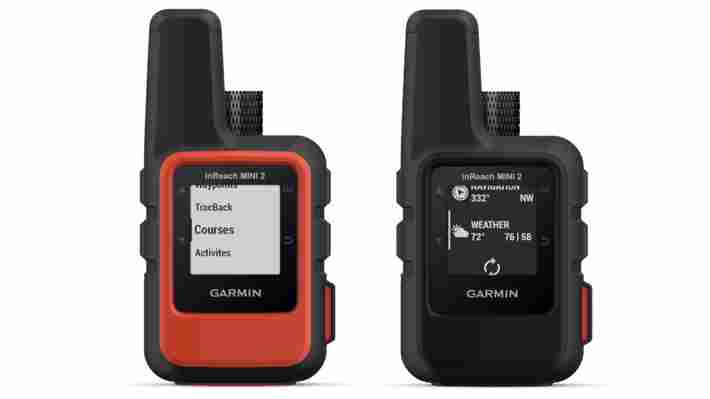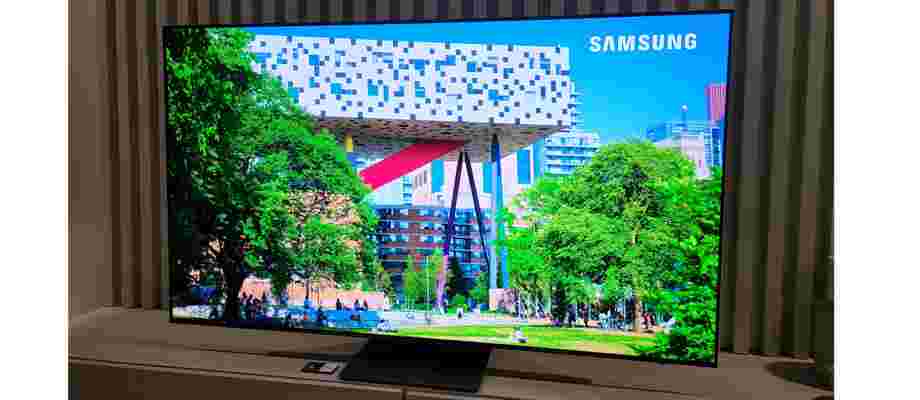Garmin has launched a new compact satellite navigation device for hiking and exploring in remote locations. The inReach Mini 2 can keep tracking your location for up to 30 days, provides weather updates, lets you stay in touch with friends and family, and can send emergency SOS alerts.
It's small enough to slip in a pocket or pack, measuring 5.17cm x 9.90cm x 2.61cm, and weighs only 100g. It has a transflective memory-in-pixel display (like most Garmin running watches)
It includes a course creator so you can plan your route in advance, and its TracBack navigation feature stores your route as you go, and if you suspect that you've taken a wrong turn or just want to head home, it will lead you back the way you came.
Two-way text messaging lets you stay in touch with family and friends even then there's no mobile phone signal, sending messages to other inReach devices, via SMS, or by email. Friends and loved ones can also follow your GPS location in real time through your inReach Mapshare page.
SOS alerts
Even with the best planning, emergencies sometimes happen. If you need help while you're outdoors, you can hit the inReach Mini 2's dedicated SOS button, which will send a distress alert to the Garmin International Emergency Response Coordination Center - a fully staffed professional emergency response center, which will co-ordinate with your nearest search and rescue organization to get assistance to you as soon as possible.
If you own a Garmin watch , you can easily link it to the inReach Mini 2 so you can receive alerts and trigger an SOS directly from your wrist. It can also be connected to marine chartplotters, in-vehicle navigators, and aviation systems.

The inReach Mini 2 is on sale now direct from Garmin for $399.99 / £349.99 / AU$599, and to use its communication features, you'll also need an inReach subscription . You have a choice of either a monthly plan that only involves a 30-day commitment and is useful for occasional trips, or an annual plan that costs less per month and means your device is ready to use any time.
Garmin leapt into 2022 with gusto; in early January the company unveiled the Venu 2 Plus (a version of the Venu 2 watch with an added microphone), and just a few weeks later it released both the long-awaited Fenix 7 and the luxury Epix sports watch. It'll be interesting to see what else it unveils this year – both watches and other navigation devices.
Samsung's smaller OLED TVs would be very good news for your wallet
Samsung is launching its first 4K OLED TVs this year – and not just any OLED TVs. They use a new kind of OLED panel called QD-OLED, which mixes the Quantum Dot color-enhancing tech from Samsung's QLED TVs with OLED pixels. And in our Samsung S95B hands-on the results look very promising indeed.
However, like all new technologies there are some downsides, and in the case of QD-OLED, it's the price and the sizes. All of the best OLED TVs are pretty premium, but Samsung's are set to be near the upper end of the price range, and the Sony A95K (which uses the same QD-OLED panel) will be even more expensive.
And this year there will only be 55-inch and 65-inch sizes of these TVs – so anyone who needs to go smaller for space reasons, or wants to go bigger for awesome-home-theater reasons, is out of luck.
But a new report from the screen-specialist analysts at DSCC ( via FlatpanelsHD ) says that Samsung Display (the part of Samsung that makes the panels) will be able to introduce 49-inch and 77-inch models next year, following changes to its manufacturing processes.

While we're obviously happy about that on its own, what may be even more pleasing is the news that Samsung Display is aiming to drastically improve the yield efficiency of its manufacturing, which will mean the price of each individual panel sold can drop.
Manufacturing yield refers to how many of the products you manufacture are actually sellable. Electronics are complex, and it doesn't take much of a mistake or defect for a product to simply not work. If you have a yield of 50%, that means fully half of your production is going to waste – and the cost of all that waste has to be included in the price of the ones you can sell.
QD-OLED was reported as struggling with yield early on, but Samsung Display has recently said it's achieved 75% yield, and is aiming for 90% yields by the end of the year. So even if the company doesn't cut costs in any other way, that will lower prices (assuming Samsung achieves its aims).
When you combine the fact that Samsung will have to charge less for a smaller TV anyway (although, perhaps not a lot less if the LG C2 's new, barely-cheaper 42-inch model is anything to go by), we should see the entry cost of this next-gen challenger for our list of the best TVs come down at least a little next year.
Of course, regular OLED screens will likely keep dropping in price in the meantime, so whether QD-OLED advantages, such as higher brightness and a wider color gamut, make it feel worth the higher cost (even if it's a slightly smaller premium) remains to be seen.
Halo TV series producer reveals when season 2 will start filming
The second season of Paramount's Halo TV show should enter full production "before too long", according to executive producer Kiki Wolfkill.
Speaking exclusively to TechRadar, Wolfkill – who oversees Halo's transmedia productions for 343 Industries – revealed that season 2 of the Paramount Plus sci-fi series was still early in development.
The Halo TV series was renewed for a second season in February , with Fear the Walking Dead executive producer David Wiener replacing Steven Kane as showrunner . However, it could be a while before the next entry in the Halo TV show arrives on Paramount's streaming platform, with season 2 currently rooted in pre-production territory.
Asked if she could provide an update on how season 2's development was going, Wolfkill told us: "We're early-ish [in the development cycle]. I think we kind of ploughed ahead in the hope we would get greenlit for another outing.
"You know, not unlike a game you finish, you immediately have lots of things we want to do. People are exhausted but also excited to take forward what we learned [on season 1] or the ideas we didn't get to implement. So we're aiming towards getting back into production before too long, and we're super thankful for the renewal."

Yerin Ha, who portrays new character Kwan Ha in the Halo TV show, added that she and her fellow cast members had no idea about when filming on season 2 would begin.
"I think they're already in pre production," Ha told TechRadar. "But we have no word on when filming will happen. Hopefully, it'll be pretty soon."
The Halo TV series will make landfall on Paramount Plus on Thursday, March 24 in the US. Critical reception to the live-action adaptation of the beloved first-person shooter videogame series has been mixed ahead of launch . Meanwhile, long-time Halo fans have hit out at the show's deviation from the source material, such as the news that Master Chief's face will be revealed and his AI companion Cortana undergoing a significant redesign , following the first trailer's release .
Pablo Schreiber, who plays Master Chief/John-117 in the TV adaptation, exclusively told TechRadar that revealing Chief's face is " the only choice ". Fans, though, are yet to be convinced.
We won't know how well Halo's TV adaptation will be received by fans until its release later this week. Regardless of how well (or bad) it does, Halo season 2 is definitely on the way.
For more Halo TV show-based content, check out why we think Paramount's live-action series has an identity problem . Alternatively, read up on how the show fits into the wider Halo universe and our Halo Infinite review .